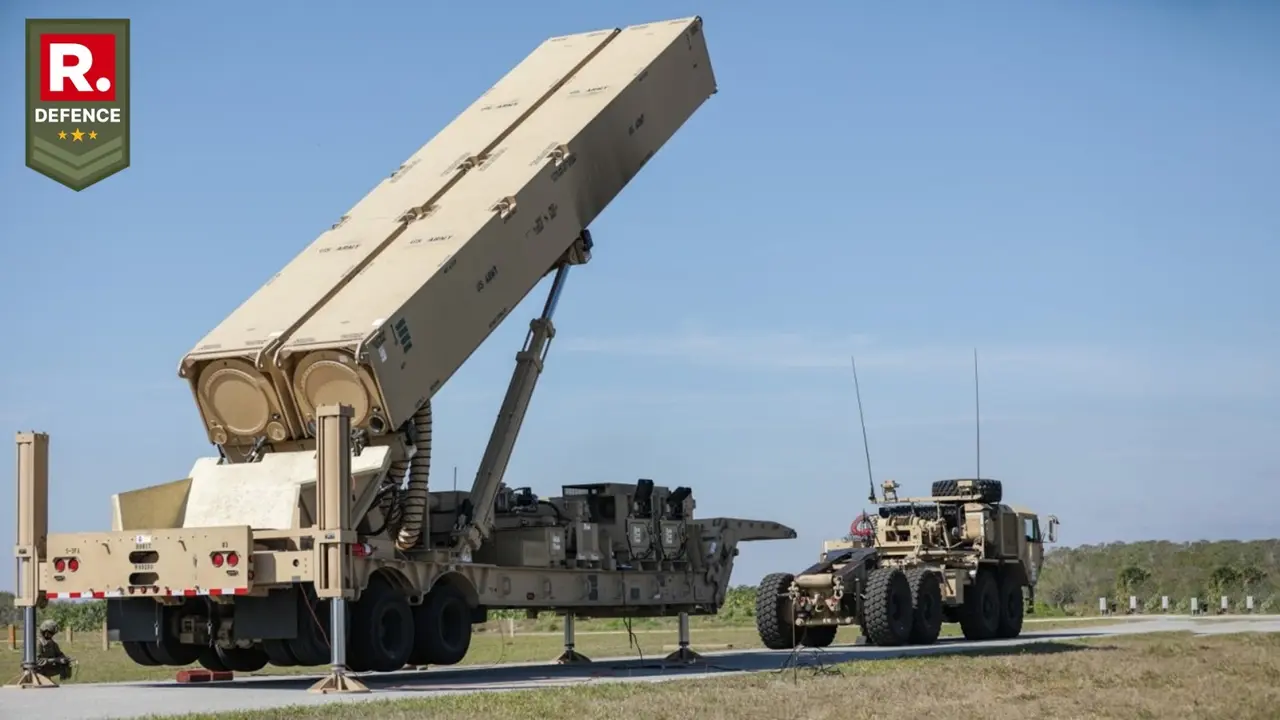Updated 3 March 2025 at 16:59 IST
Why US Army is Poised to Equip Multi-Domain Task Force With Hypersonic Missiles in 2025
After years of development setbacks, the U.S. Army is set to field its first long-range hypersonic weapon (LRHW) to a combat unit by the end of fiscal 2025.
- Defence News
- 4 min read

Washington, D.C. – After multiple setbacks and testing hurdles, the U.S. Army is set to field its first long-range hypersonic weapon (LRHW) to a combat unit by the end of fiscal 2025, a senior defence official confirmed to Defense News on Wednesday. The announcement comes after years of development challenges and aborted tests, delaying what was originally a 2023 deployment timeline.
The Army had initially planned to equip the 1st Multi-Domain Task Force, 5th Battalion, 3rd Field Artillery Regiment, 17th Field Artillery Brigade, stationed at Joint Base Lewis-McChord (JBLM) in Washington state, with the ground-launched hypersonic rounds by the fall of 2023. However, the program encountered several roadblocks, primarily related to testing at the launch range rather than any inherent flaws in the missile itself.
Despite these delays, the U.S. has pushed forward with hypersonic weapons development, recognizing the need to keep pace with rivals China and Russia, both of whom have aggressively tested and deployed their own hypersonic missile capabilities.
In a major breakthrough, the Army conducted a successful end-to-end hypersonic missile flight test at the Pacific Missile Range Facility in Hawaii in May 2024. This milestone significantly advanced the program, proving the system’s operational viability. The Army and Navy followed up with another successful test in December 2024 at Cape Canaveral Space Force Station, Florida, validating the Common Hypersonic Glide Body (C-HGB)—a jointly developed glide vehicle that forms the core of the new weapons system.
Advertisement
Hypersonic Weapons: The Future of Warfare
Hypersonic weapons travel at speeds greater than Mach 5—more than 3,836 miles per hour—and can manoeuvre unpredictably at varying altitudes, making them nearly impossible to detect and intercept with existing missile defence systems.

The C-HGB, which is a critical component of the LRHW, includes a warhead, guidance system, cabling, and a thermal protection shield. The U.S. Army’s version of this weapon will be launched from a mobile ground platform, while the U.S. Navy’s version, called Conventional Prompt Strike (CPS), will be launched from naval vessels.
Advertisement
“This test builds on several successful flight tests where the Common Hypersonic Glide Body reached hypersonic speeds and hit target distances,” former Army Secretary Christine Wormuth said after the December test. “This demonstrates that we can put this capability in the hands of the warfighter.”
Overcoming Development Challenges
Although the hypersonic program has taken nearly two years longer than planned, Army officials have emphasized that missile development programs typically span a decade. The LRHW program is just past the five-year mark, underscoring the accelerated pace of development despite its setbacks.

Unlike China and Russia, which have decades of experience with hypersonic technology, the U.S. military and defence industry have had to build their hypersonic weapons capability from scratch. The Army has been working with Leidos’ Dynetics to establish an industrial base for the C-HGB, marking the first time the domestic private sector has manufactured such a system.
Additionally, the Army has independently developed launchers, trucks, trailers, and battle operations centres to support the deployment of the weapon. Lockheed Martin serves as the weapon system integrator, ensuring that the hypersonic capability can be effectively launched from a mobile truck-based platform.
Combat Readiness and Training
While awaiting live rounds, the Army has already delivered hypersonic weapon systems minus the missiles to the Multi-Domain Task Force at JBLM, meeting its fiscal 2021 fielding deadline. Since then, the unit has been actively training on the system in preparation for the final integration of the all-up rounds.

The deployment of long-range hypersonic weapons will significantly enhance the U.S. military’s ability to strike high-value targets at extreme distances with unprecedented speed and precision. As geopolitical tensions continue to rise, the U.S. military’s progress in hypersonic technology is seen as critical to maintaining strategic deterrence against adversaries like China and Russia, who have already operationalized such capabilities.
With the successful testing of its hypersonic missile systems and the planned fielding of LRHW by 2025, the U.S. Army is finally poised to enter the hypersonic era—one that promises to redefine the future of warfare.
Published By : Yuvraj Tyagi
Published On: 3 March 2025 at 16:59 IST
